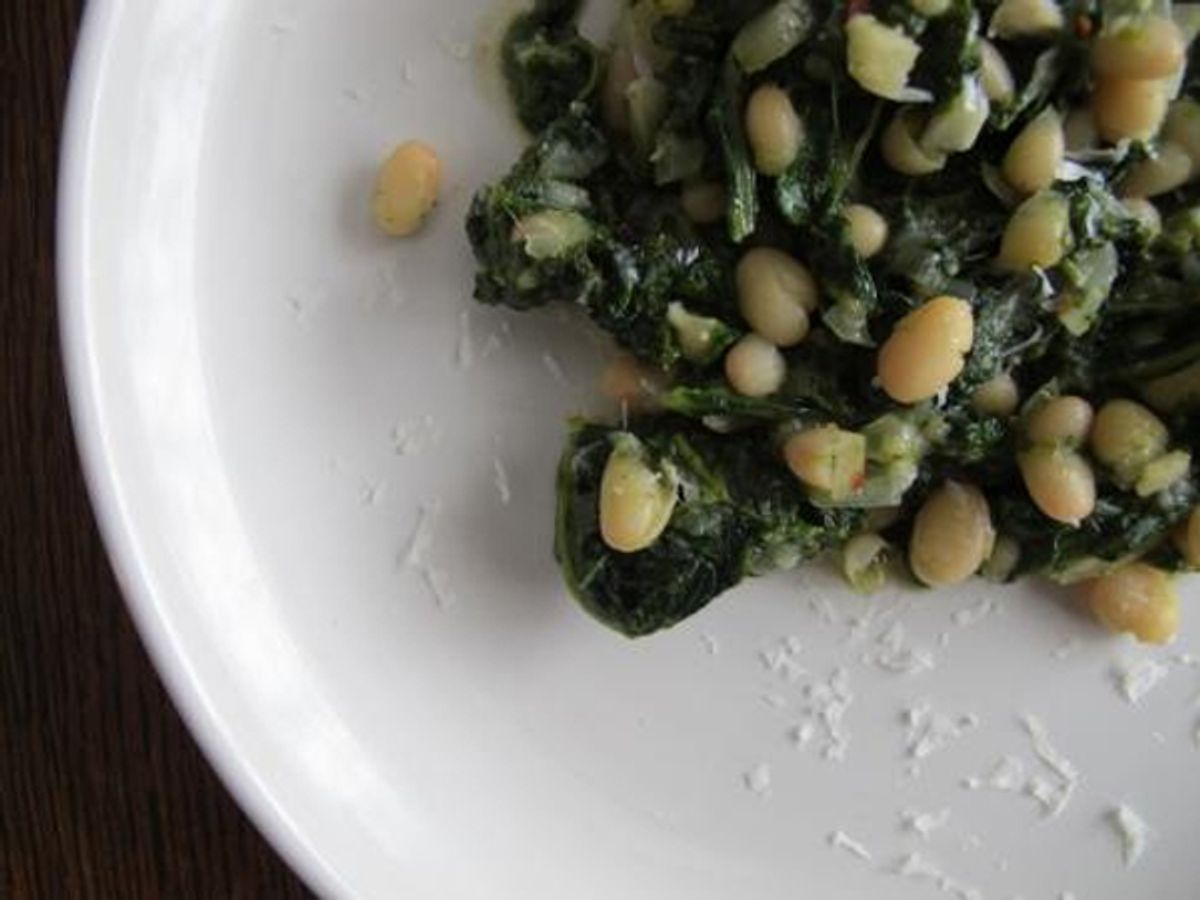The best part of not being a vegetarian anymore is eating bacon. Second is not being a vegetarian but still loving vegetables and now knowing how to cook them.
A few years ago, I got into a macrobiotic diet. I was attracted to the ideals of balance and eating in tune with the seasons, yin and yang, all that groovy jazz. Most of all, I loved the elemental-ness of it. Grains, greens, umami, vinegar, miso, those little rice crackers -- it was all so simple and energizing. I stopped eating dairy and meat. I felt centered and pious, albeit with a nagging sensation that I was being too rigid, missing out on too much. I wondered if this meant packing my own brown rice balls on my next big trip to visit food-loving family or friends. It was this notion that eventually did me in, as if by choosing to eat a certain way, I was betraying a huge piece of myself that took so much joy in cooking and eating with others. While ultimately not for me, I credit that bout of super vegetarianism for giving me new insights into what I crave on a basic level.
These days, I may not have a clear-cut dietary philosophy or label to file myself under but the simplicity of those vegetarian-centric meals has stayed with me. I crave the interplay of those basic tastes: sweet, salty, acidic, bitter, umami. When meat is included it best be damn good, and utterly savored for the deliciousness that only bone and fat can bring. Likewise, cheese in large quotas is no one's friend but should be dutifully worshipped in limited quantities. Most of the time, though, vegetables are where it's at.
A love of greens (real greens) is something that sneaks up on you, but once it takes hold, you'll never look at a head of romaine or iceberg the same again. Unlike your run-of-the-mill lettuces, kale, a wholly different animal, demands respect. Like an elder aunt, it must be treated right and accorded its proper place. Even in your shopping bag its ruffled proud head rises to the top of the bag, announcing itself as your wise choice and refusing to be stuffed under a bag of chips. Once home at the cutting board, kale requires commitment and work. Unlike dainty greens you can simply wash, dry and fluff into a salad bowl, kale forces you to appreciate what a magnificent specimen it truly is. Like cabbage, as you wash it and cut away its hard, inedible parts, you can't help noticing the intricate lines and patterns made in its dark green leaves. Kale makes you earn its love, and then rewards you with its amazing, satisfying tenderness and versatility.
It's also the perfect partner for starchier fare: potatoes, beans and pasta. It can stand up to these winter workhorses when other greens, like spinach or mustard greens, wimp out because kale holds its shape and doesn't wilt at the first sign of moisture. One of my favorite standbys is kale braised with white beans and garlic, some red pepper flakes or chili for heat, a splash of vinegar near the end of its cooking time, finished off with a few peels of pecorino, and eaten with crusty bread. Once you try it, it will become an obsession, you have my word.
Braised greens and beans
Ingredients
- One large bunch of kale (curly or Russian), washed, cut out the stems and cut leaves in medium to large pieces
- 2 cups of cooked or canned white beans
- 1-2 tablespoons of red pepper flakes or finely diced red chile, to taste
- 1 small red onion, finely diced
- 2 cloves of garlic, chopped
- Stock, bean cooking liquid or white wine for deglazing, as needed
- Extra virgin olive oil, as needed
- Sherry vinegar, as needed
- Your favorite hard cheese (pecorino or parmesan work well), grated, to taste
- Salt and pepper, to taste
Directions
- Warm a few tablespoons of olive oil in a medium-size pan or Dutch oven.
- Sauté the onions, garlic and red pepper flakes over medium high heat until softened, a few minutes.
- Add beans and stir to combine. (I like the beans to start to get a little caramelized; leave on as long as you like.)
- Deglaze pan with liquid of choice (stock, water, white wine).
- Add greens, stir to combine, and add another half-inch or so of liquid of choice, season to taste with salt and pepper, and cover for 5-7 minutes
- Check on the greens, add more liquid if you like the dish more loose (I don't like this dish too liquidy or greens that completely lose shape; I like them to have a light sauce but not be swimming in liquid); add a few splashes of vinegar, recover and let cook for a few more minutes or to your deserved level of doneness.
- Adjust seasonings; complete the dish by adding a good dusting (or blizzard) of your favorite cheese.
- Serve immediately with a hunk of crusty bread.

Shares